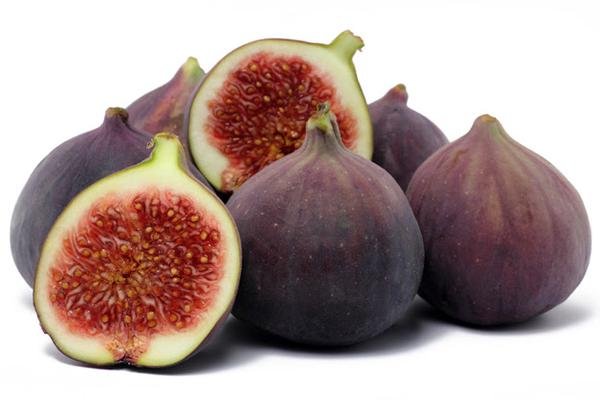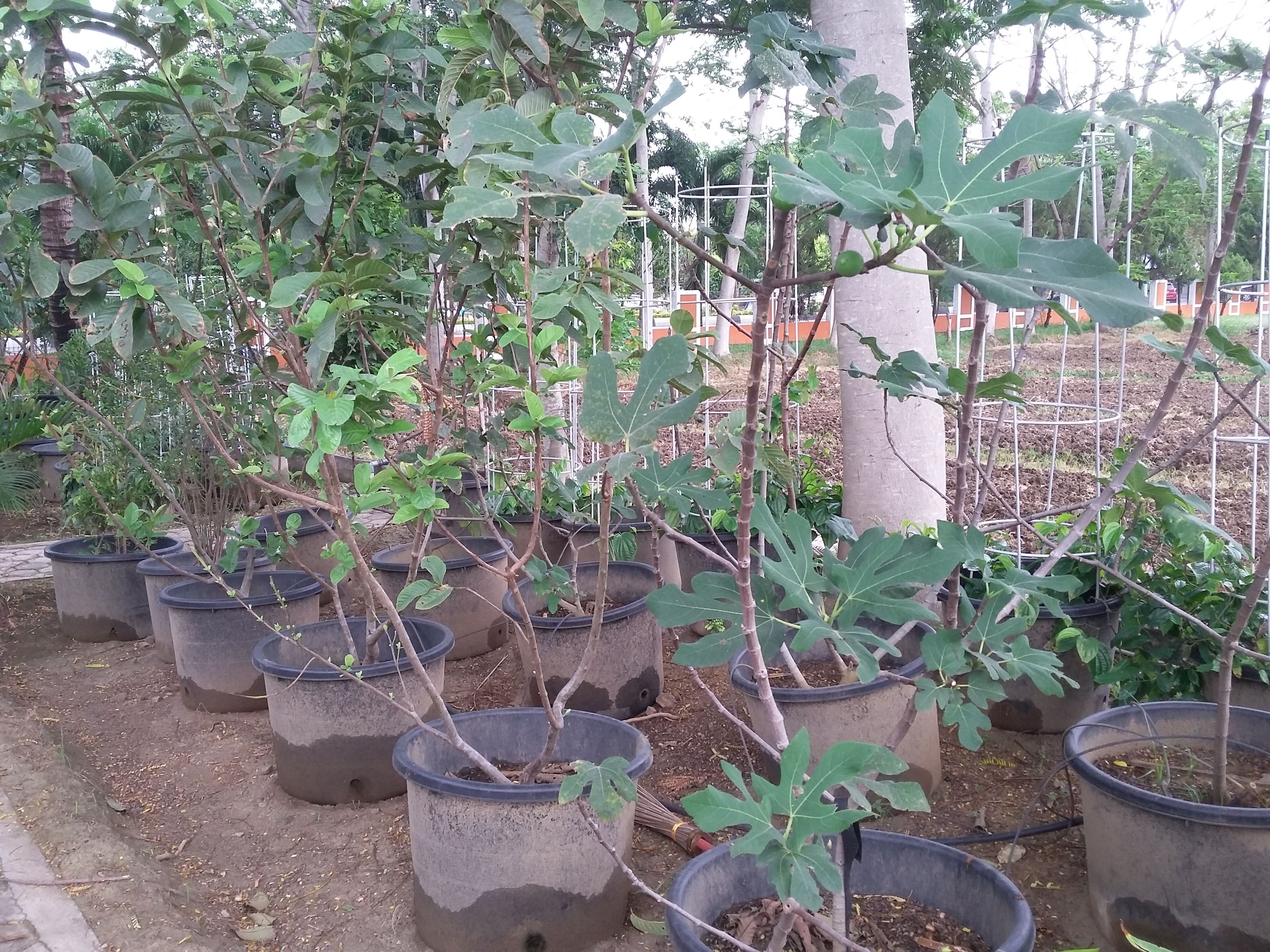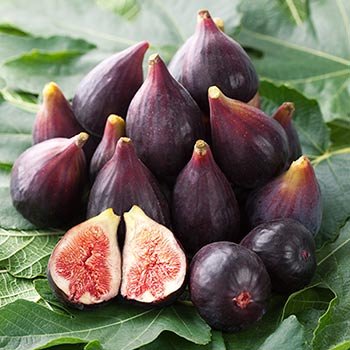Fig Plant ( Ficus carica )
Based on literature Joseph and Justin (2011) Tin plants in plant systematics are classified as follows:
Kingdom : Plantae
Divisio : Magnoliophyta
Kelas : Magnoliopsida
Ordo : Rosales
Famili : Moraceae
Genus : Ficus
Species : Ficus carica L.

Plant Morphology
The bark is smooth gray and silvery. Large undulating leaves usually consist of 5 fingers but sometimes 4 or 3 fingers. The color of the leaves is thick and broad, veined, including single leaf, coarse hair on the upper surface and fluffy on the bottom. Tin plant has many branches and shade, Tin wood is weak and quickly decays. The twig is cylindrical and pithy rather than wood, containing the sap of a lot of milk. Tin plant flowers are clustered in the fruit and only a few are seen out. The fruit comes from the leaf's armpit with the size of a ping pong ball and the color and shape of the different varieties. The seeds have different sizes, ranging from large, medium and small size and range from 30 to 1,600 per piece. Seeds are edible and generally hollow, unless pollinated. Seeded seeds provide a spicy flavor as in the characteristics of dried figs.

Tin fruit has a flavor and taste similar to a combination of Papaya and Guava. The texture is padded with a lot of seeds and contains water. Besides eaten in the form of fresh and dried Tin fruit serve as raw material for food production. This fruit can be processed into jam, juice, and canned fruit. Tin plants are now found all over the world, these are common names in different parts of the world such as Anjir (part of India), Fig (English), Higo (Spain), Figue (French), Feige (Germany). The fruit of the Tin plant is a pure fruit not a fruit in a biological sense consisting of hundreds of stem and pistil (Joseph et al., 2011).
Terms of Growing Tin Plant

The tin plant is a subtropical plant that belongs to the genus Ficus and the family of Moracea. This plant can grow in several parts of the world including the Mediterranean region, Southeast Asia, South America, South Africa, Caucasia and Australia (Mederes Adnan, 2008). When grown in a cold area, tin trees are often injured by dew that knocks out young branches and can damage plant shoots. The tin plant is able to adapt to a minimal nutrient environment as well as tolerant of alkaline soil, saline soil and dry soil but ideally grows on soil with well drainage at least one meter height with a pH between 5-8 (Mederes Adnan, 2008). Adaptive varieties grown in Indonesia are brown turkey, green yordan, purple yordan, panache, conadria, and red Israel.
Congratulations @doctorju87! You have received a personal award!
Click on the badge to view your Board of Honor.
Do not miss the last post from @steemitboard:
SteemitBoard World Cup Contest - The results, the winners and the prizes
Congratulations @doctorju87! You received a personal award!
You can view your badges on your Steem Board and compare to others on the Steem Ranking
Vote for @Steemitboard as a witness to get one more award and increased upvotes!